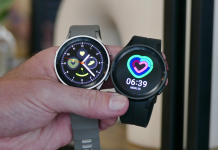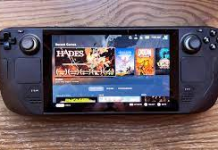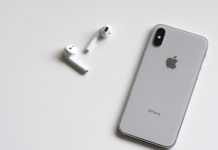The Mac Studio, a tiny, standalone computer aimed for creative workers, was unveiled at Apple’s Peek Performance product launch event on Tuesday. For artists, photographers, videographers, and engineers, the Mac Studio, along with the Studio Display, provides performance, connectivity, and adaptability. The Mac Studio will be available from March 18 for $1,999 (£1,999, AU$2,499). Preorders are currently available.
On the front and back of the Mac Studio, there are numerous connectivity ports. People can multitask and adapt workplaces to best suit their requirements with several ports. There are a total of 12 ports on the Mac Studio, with nine on the back and three on the front.
The following is a list of all the ports on the Mac Studio:
Thunderbolt 4 Interfaces
A Thunderbolt 4 cable allows you to connect external monitor displays, USB devices, and other gadgets to your computer. Thunderbolt connections provide sufficient bandwidth for connecting high-speed devices and make it easier to accommodate high-powered, resource-intensive equipment.
There are four Thunderbolt 4 ports on the back of the Mac Studio.
The Mac Studio’s many Thunderbolt 4 ports provide you more options for connecting devices without slowing down your system.
Ethernet Connection
An Ethernet port (also known as a socket or jack) connects computers, servers, routers, gaming consoles, printers, and other devices through Ethernet. If you don’t have access to Wi-Fi, Ethernet can help you connect to the internet.
The Ethernet port on the Mac Studio is located on the back.
The Mac Studio includes a 10GB Ethernet connector, allowing users to transmit and transcode information more quickly.
USB Type-A Ports
USB-A ports and cables work in the same way as USB-C ports and cables, however they’re more common on older devices. USB-A, like USB-C, can be used to charge or connect multiple devices.
On the back of the Mac Studio, there are two USB-A connectors.
You won’t need to acquire an adapter if you get a Mac Studio because you’ll be able to connect some of your older technology.
USB Type-C Ports
USB-C ports and cables are similar to USB-A, except they are designed for newer technologies. External devices, such as phones and cameras, can be connected and charged through these ports.
On the front of the Mac Studio, there are two USB-C connectors.
According to Apple, these two ports were positioned on the front of the Mac Studio for rapid access and device switching. These ports can transfer data at a rate of 10 Gbit/s if you’re using an M1 Mac. Apple claims that Thunderbolt 4 connectors will be available on Macs with the new M1 Ultra CPU. This translates to data transfer rates of up to 40 Gbit/s.
HDMI Input
HDMI ports and HDMI cables are used to send and receive video and audio between external devices such as monitors and televisions.
On the back of the Mac Studio, there is an HDMI port.
The HDMI port on the Mac Studio allows users to expand their work setting for maximum efficiency.
3.5mm Jack For Headphones
Instead of connecting external headphones wirelessly with Bluetooth, headphone ports allow you to connect them with a cord. This may be an advantage if you wish to utilize a favorite pair of wired headphones as your main pair or as a backup if your wireless headphones are charging.
The Mac Studio has a headphone jack on the back.
The headphone jack on the Mac Studio is also a pro audio jack. This implies it can be used with headphones or external speakers with a high impedance.
SDXC Card Slot
An SD card slot allows you to access media quickly. If you’re a photographer, for example, you can see your photographs by inserting the SD card from your DSLR camera into the MacBook Pro slot.
The front of the Mac Studio includes an SD card slot.
The Mac Studio is aimed towards creative professionals, featuring features tailored to photographers and videographers, such as quick access to camera memory cards and external storage.








